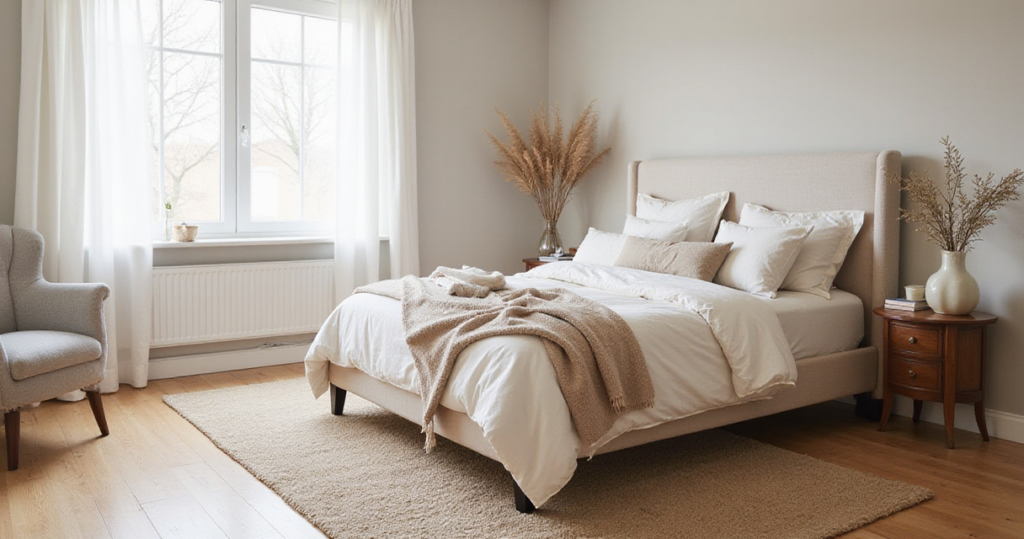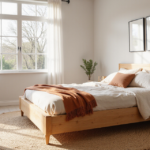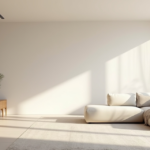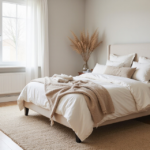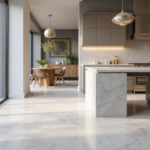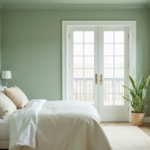Stepping into your bedroom should feel like wrapping yourself in a warm embrace after a long day. Yet too many of us settle for spaces that feel more like hotel rooms than personal sanctuaries. The difference between a bedroom that merely functions and one that truly nurtures lies in the intentional choices we make about color, texture, lighting, and atmosphere.
Creating a cozy bedroom retreat isn’t about expensive overhauls or following every trending hashtag. It’s about understanding how different elements work together to engage your senses and signal to your body that it’s time to unwind. From the moment morning light filters through thoughtfully chosen curtains to the evening ritual of dimming lamps and settling into layers of soft textures, every detail contributes to your daily well-being.
These 22 cozy bedroom decorating ideas will guide you through transforming your space into the ultimate retreat – a place where sustainable comfort meets personal style. Whether you’re working with a small apartment bedroom or a spacious master suite, these environmentally conscious approaches will help you create a sanctuary that supports both restful sleep and mindful living.
1. Choose Earth-Toned Paint with Low VOCs
Earth-toned paint colors create an immediate sense of grounding and warmth that synthetic hues simply cannot replicate. When you surround yourself with colors inspired by nature – warm terracotta, soft sage, creamy mushroom, or dusty clay – your nervous system naturally begins to settle. These organic shades work particularly well in bedrooms because they don’t compete for attention or overstimulate the mind during those crucial wind-down hours.
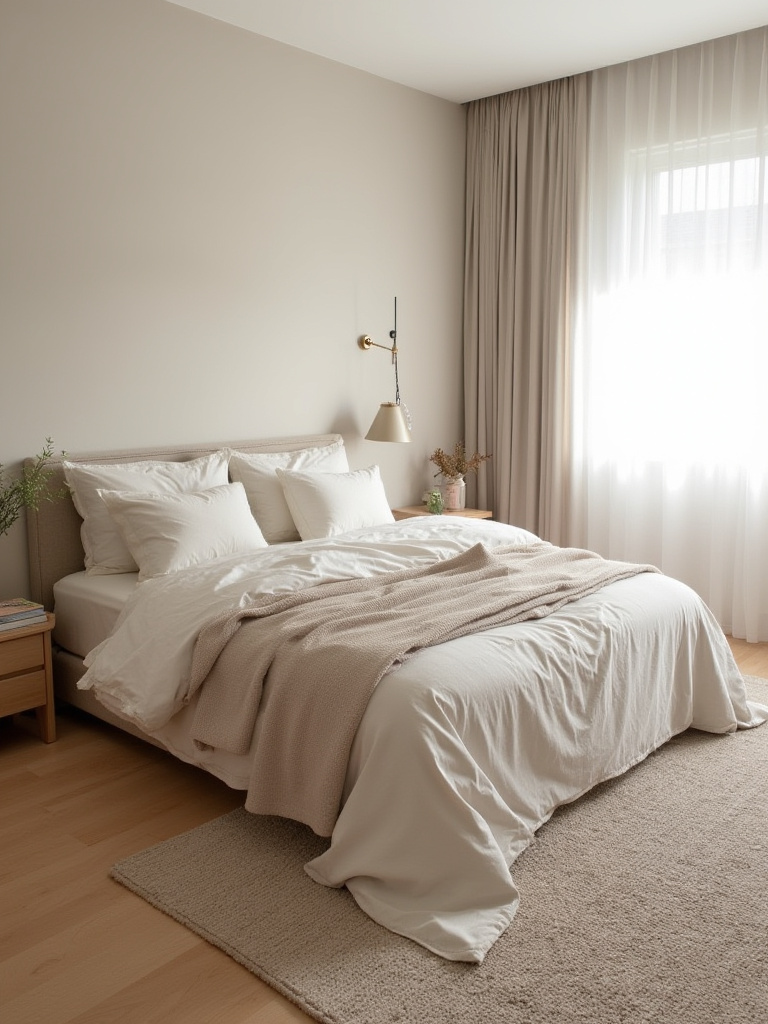
The key to implementing earth tones successfully lies in selecting low-VOC or zero-VOC formulations that won’t compromise your indoor air quality. Traditional paints release volatile organic compounds for months after application, potentially disrupting sleep and causing headaches. Brands like Clare, Farrow & Ball’s Modern Emulsion, or Benjamin Moore’s Natura line offer rich, complex earth tones without the chemical off-gassing. Consider colors like “Current Mood” (a warm greige), “Shroom” (mushroom beige), or custom-mixed clay tones that shift beautifully throughout the day as natural light changes.
The beauty of this approach extends beyond just the walls – these colors create a perfect backdrop for layering in natural textures and sustainable materials that we’ll explore next.
2. Layer Organic Cotton and Linen Bedding
Your bedding choices profoundly impact both your comfort and environmental footprint, making organic natural fibers an investment in better sleep and planetary health. Organic cotton and linen bedding naturally regulate temperature, wick moisture, and improve with each wash, developing a soft patina that synthetic materials never achieve. The breathability of these materials prevents the clammy feeling that can disrupt sleep cycles, while their durability means you’re not constantly replacing worn-out sheets.
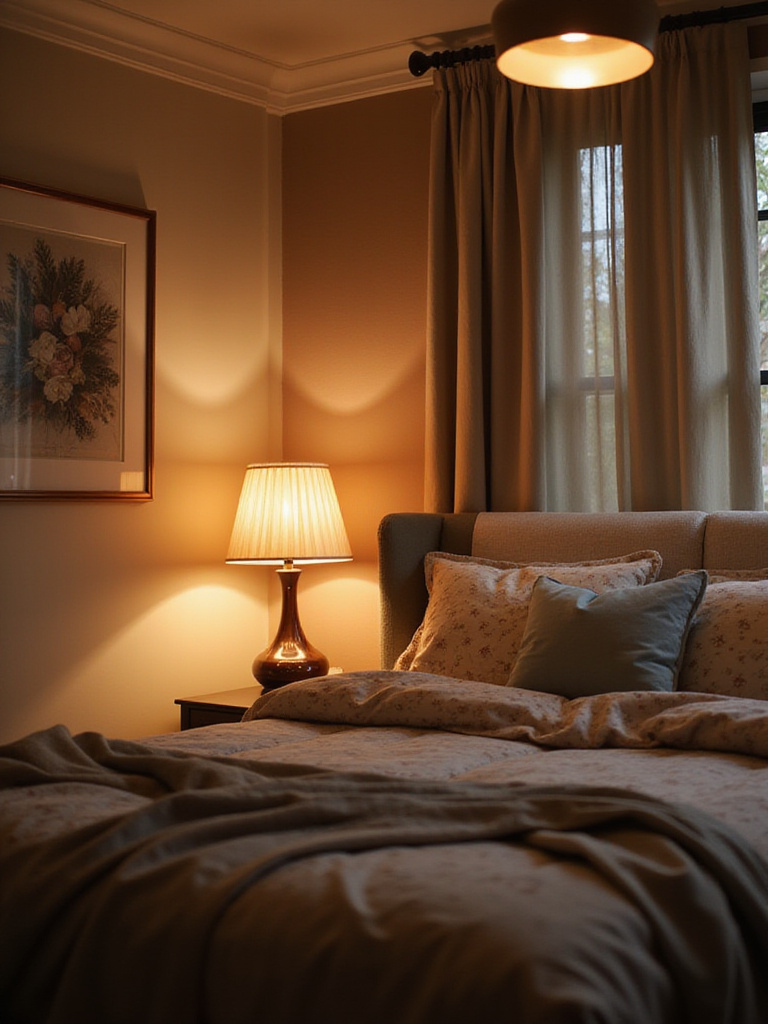
When selecting organic bedding, look for GOTS (Global Organic Textile Standard) certification, which ensures the cotton was grown without pesticides and processed without harmful chemicals. Layer different textures for maximum coziness: start with smooth organic cotton percale sheets, add a linen duvet cover for relaxed texture, and finish with a chunky organic cotton knit throw. The slight wrinkled texture of linen adds visual interest while remaining incredibly comfortable against the skin.
- Percale weave: Crisp, cool, and breathable – perfect for warm sleepers
- Sateen weave: Silky smooth with a subtle sheen – ideal for cooler climates
- Linen blend: Relaxed texture that softens beautifully over time
This foundation of natural fibers sets the stage for incorporating vintage and secondhand furniture pieces that add character without environmental cost.
3. Incorporate Vintage Furniture Finds
Vintage furniture brings instant character and environmental responsibility to your cozy bedroom retreat. A mid-century modern dresser, an antique wooden trunk at the foot of your bed, or a vintage upholstered chair creates focal points with stories to tell. These pieces often feature superior craftsmanship and solid wood construction that modern furniture rarely matches, making them both beautiful and functional for decades to come.
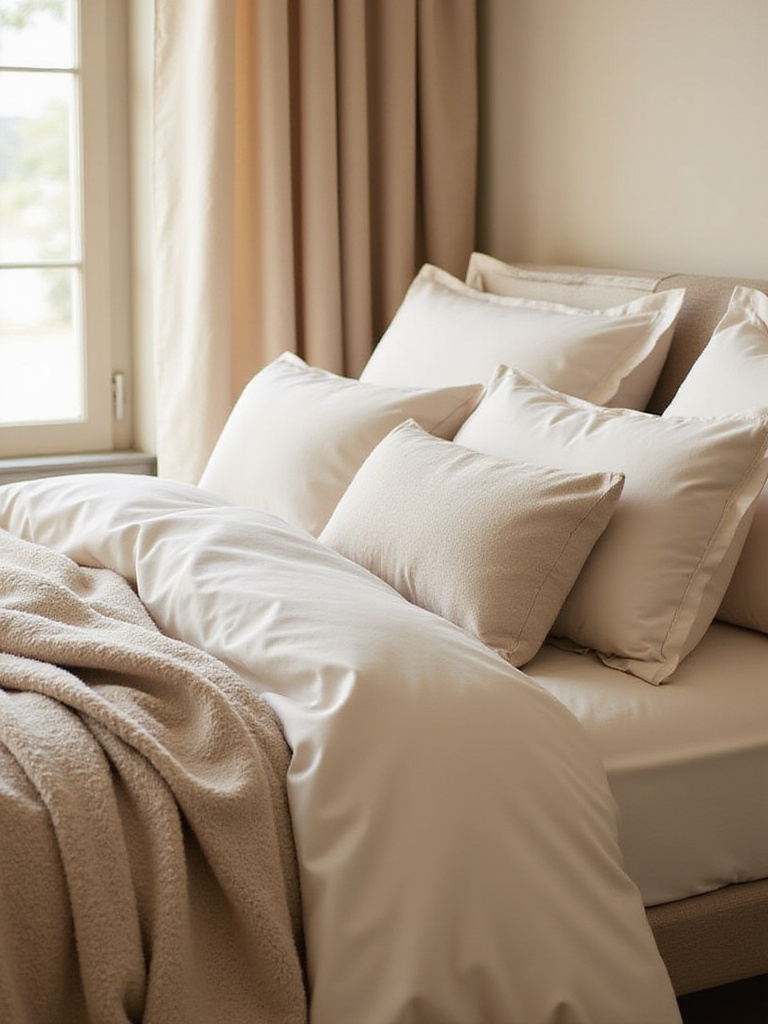
The hunt for vintage pieces becomes part of the joy – estate sales, antique shops, and online marketplaces offer endless possibilities for unique finds. A 1960s teak nightstand might need minor refinishing, but the warm wood grain and clean lines will anchor your space beautifully. Vintage upholstered pieces can be reupholstered in organic fabrics, giving you complete control over both style and sustainability. The patina and slight imperfections in vintage pieces add authenticity that new furniture lacks.
Scouring thrift stores and estate sales also means you might discover unexpected treasures: a vintage brass lamp that casts perfect reading light, or a wooden jewelry box that keeps your bedside table organized. Each piece reduces demand for new manufacturing while adding personality that mass-produced items simply cannot provide.
Building on these unique furniture finds, let’s explore how natural fiber rugs can anchor your space with warmth and texture.
4. Anchor with Natural Fiber Area Rugs
A natural fiber area rug transforms cold floors into a warm, inviting foundation that literally grounds your bedroom space. Jute, sisal, wool, and cotton rugs offer different textures and benefits – jute provides rustic warmth, sisal adds subtle texture, wool delivers luxurious softness, and organic cotton offers easy care. These materials naturally resist odors and regulate humidity, contributing to a healthier sleep environment while adding visual weight that makes your bedroom feel intentionally designed.
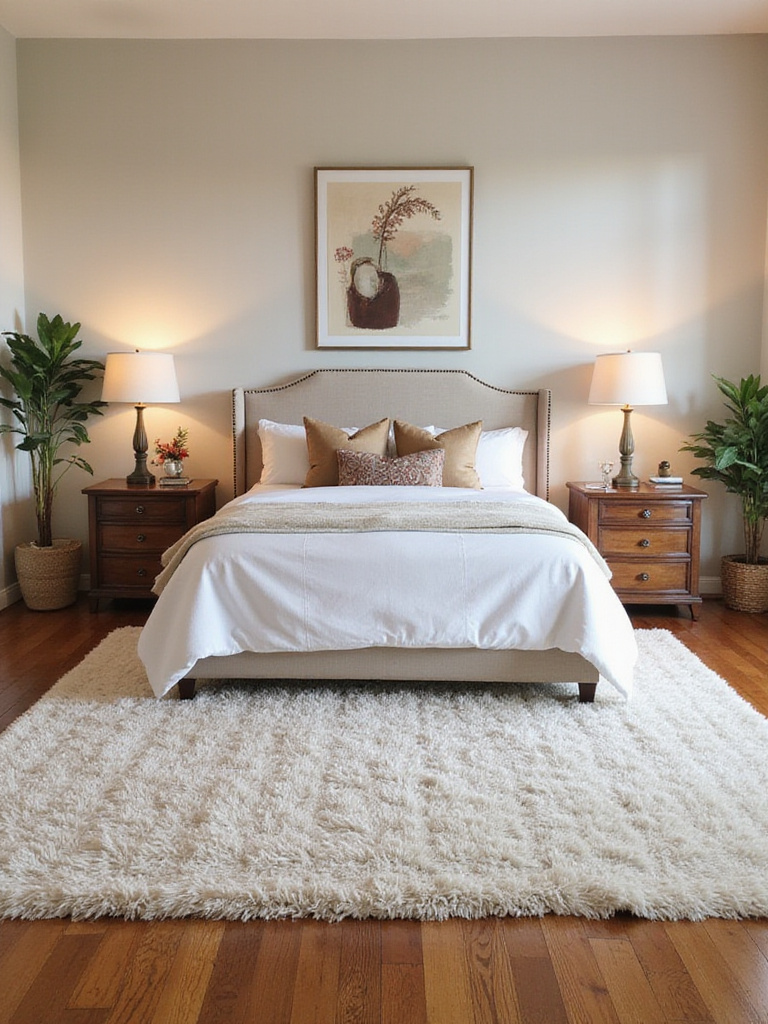
The sizing and placement of your rug dramatically impacts the room’s proportions and flow. For a queen bed, aim for at least an 8×10 rug that extends 18-24 inches beyond the sides and foot of the bed, creating a soft landing zone when you step out of bed. Layer a smaller, plush wool rug over a larger jute one for added texture and warmth. Natural fiber rugs also absorb sound, reducing echo and creating a quieter, more peaceful atmosphere that promotes better sleep.
- Jute rugs: Durable, affordable, and naturally anti-bacterial
- Wool rugs: Temperature regulating and incredibly long-lasting
- Cotton rugs: Machine washable and perfect for allergy sufferers
These natural foundations work beautifully with our next element: maximizing the natural light that makes any space feel more alive and welcoming.
5. Maximize Natural Light with Sheer Hemp Curtains
Natural light profoundly affects your circadian rhythm and mood, making window treatments a crucial element in creating a healthy, cozy bedroom environment. Hemp curtains offer the perfect balance of privacy and light filtration while being incredibly sustainable – hemp grows quickly, requires minimal water, and actually improves soil health. The natural texture of hemp adds visual interest while the loose weave allows daylight to filter through softly, avoiding the harsh contrast of heavy blackout curtains during daytime hours.
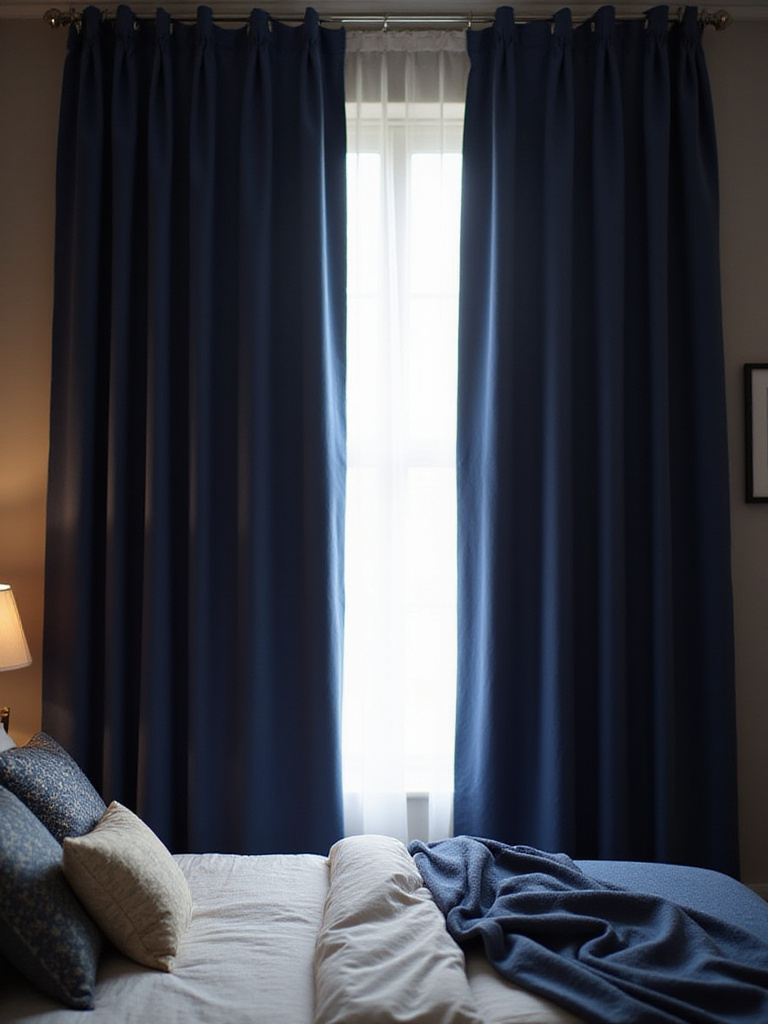
Hemp curtains develop a beautiful, relaxed drape over time and can be layered with other window treatments for complete light control. During the day, the hemp allows natural light to fill your space while maintaining privacy. For complete darkness during sleep hours, layer them with organic cotton blackout panels or bamboo blinds. The natural color variations in hemp – from creamy whites to soft grays – complement earth-toned paint beautifully while requiring minimal processing and no synthetic dyes.
Installing curtains higher and wider than your actual window frame creates the illusion of larger windows and more abundant natural light. Mount the rod 4-6 inches above the window frame and extend it 6-8 inches beyond each side. This technique makes your windows appear more generous while allowing maximum light penetration when curtains are open.
As natural light sets the foundation for your daily rhythms, incorporating living plants amplifies this connection to the natural world.
6. Introduce Air-Purifying Plants in Reclaimed Containers
Living plants transform your bedroom into a breathing ecosystem that actively improves air quality while adding organic beauty that no artificial decoration can match. Snake plants, pothos, and peace lilies work overtime while you sleep, converting carbon dioxide to oxygen and filtering out common household toxins like formaldehyde and benzene. The presence of living greenery also reduces stress hormones and creates a psychological connection to nature that promotes deeper relaxation.
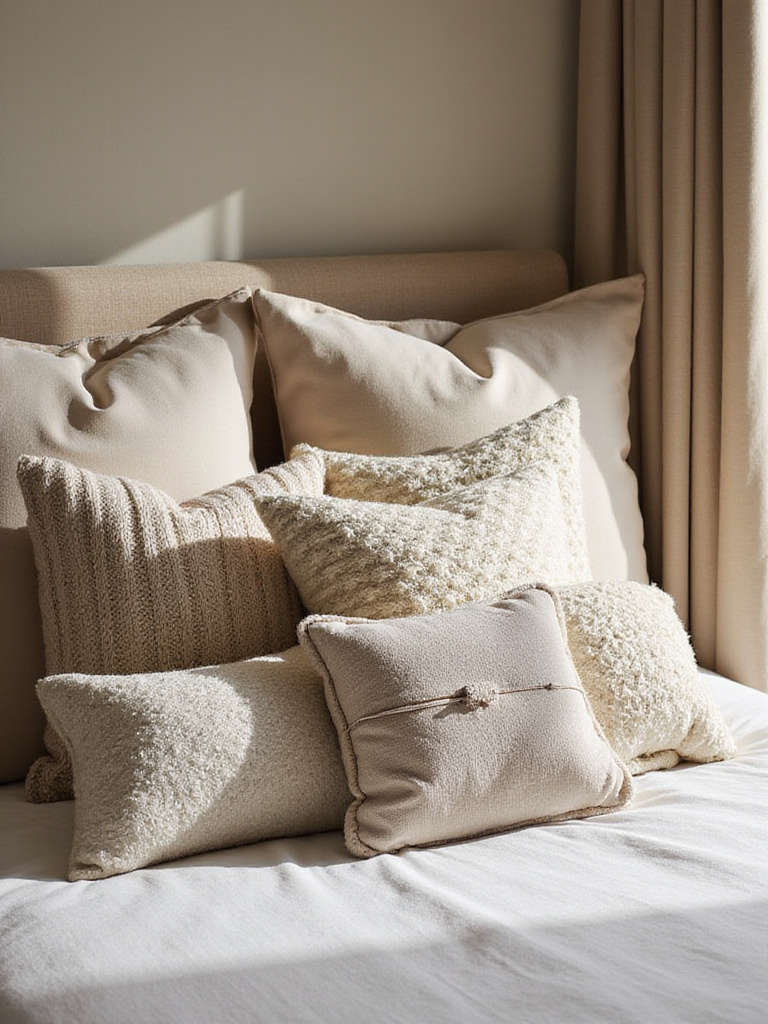
Choosing the right containers amplifies both the aesthetic and environmental benefits of your plant collection. Reclaimed ceramic pots from thrift stores, vintage brass planters, or repurposed wooden boxes add character while preventing new manufacturing. A collection of plants in varied heights and textures creates visual interest – a tall snake plant in a floor-standing vintage pot, trailing pothos in hanging macramé planters made from organic cotton rope, and small succulents clustered on a reclaimed wood shelf.
- Snake plants: Thrive in low light and release oxygen at night
- Pothos: Fast-growing, forgiving, and excellent air purifiers
- Peace lilies: Beautiful white blooms and superior toxin removal
The key to success lies in choosing plants that match your light conditions and commitment level, ensuring they thrive rather than becoming sources of stress.
The living energy of plants pairs beautifully with the warm ambiance created by sustainable lighting choices.
7. Create Ambiance with Soy or Beeswax Candles
The flickering light of natural candles creates an atmosphere that electric lighting simply cannot replicate, signaling to your body that the day is winding down. Soy and beeswax candles burn cleanly without releasing the toxic fumes associated with paraffin candles, making them safe for nightly use in your bedroom sanctuary. Beeswax candles actually purify the air by releasing negative ions that bind to dust and allergens, while soy candles provide longer burn times and excellent scent throw when infused with essential oils.
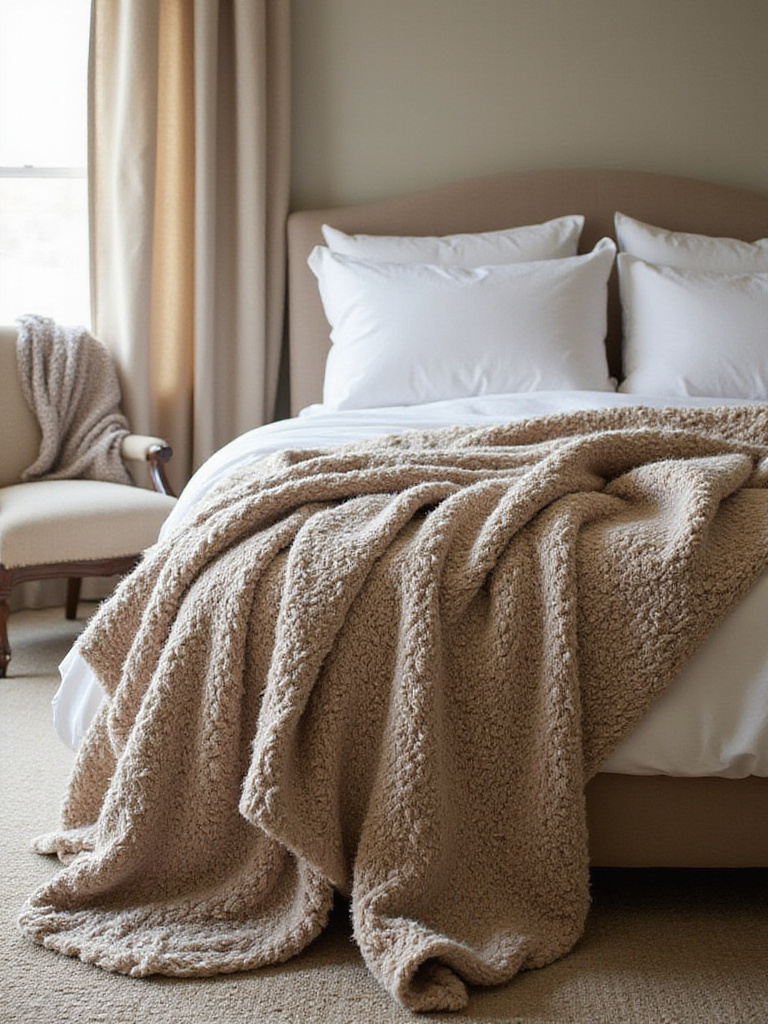
Creating a candle ritual becomes part of your evening wind-down routine. Light candles 30 minutes before bedtime to allow their warm glow to gradually replace brighter electric lights, naturally encouraging melatonin production. Group candles of varying heights on a wooden tray or vintage mirror to amplify their light and create a focal point. Choose unscented options or those scented with pure essential oils like lavender, chamomile, or sandalwood to avoid synthetic fragrances that can disrupt sleep.
The containers matter too – look for candles in reusable glass jars or ceramic vessels that can be repurposed once the candle burns down. Many artisan candle makers use vintage teacups, mason jars, or hand-thrown pottery, giving you beautiful containers for small plants or storage once the wax is gone.
This warm, natural lighting sets the perfect mood for enjoying the comfort of upcycled and repurposed decor elements.
8. Display Upcycled Decor and Art
Upcycled decor pieces tell stories while reducing waste, creating a bedroom that feels personal and environmentally conscious. An old wooden ladder becomes a unique blanket rack, vintage suitcases stack into a bedside table with hidden storage, or reclaimed barn wood transforms into floating shelves for books and plants. These pieces add character that mass-produced items lack while keeping materials out of landfills.
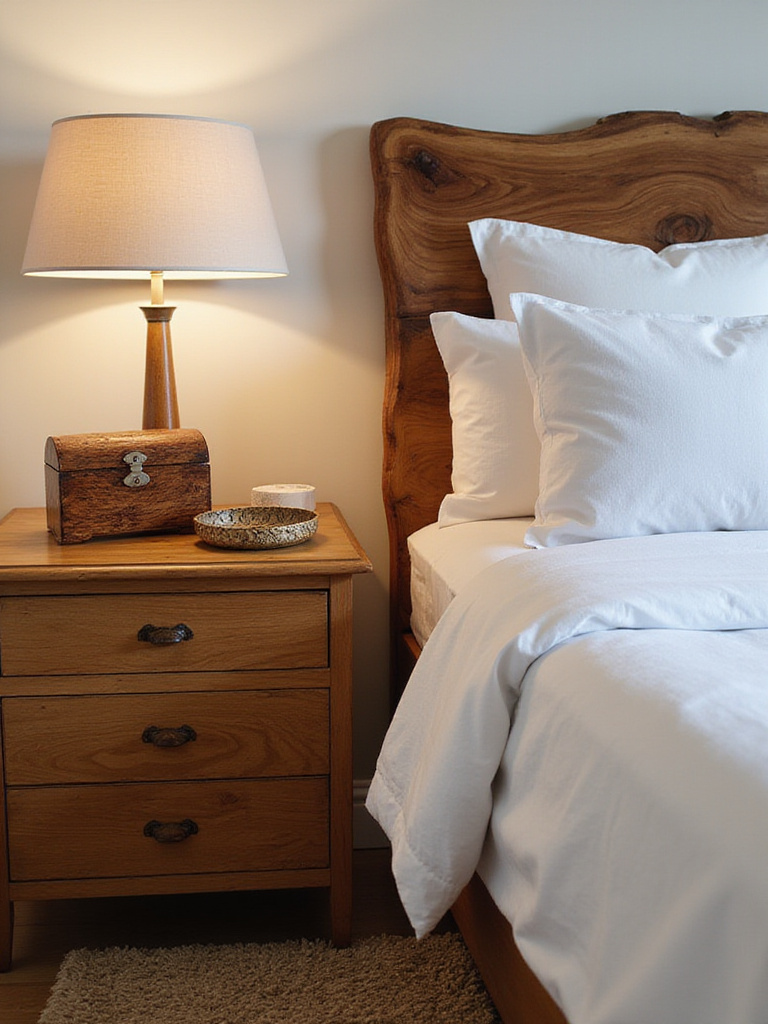
The key to successful upcycling lies in seeing potential in discarded items and having the vision to transform them. Sand and refinish that scratched wooden dresser with natural, low-VOC wood stain. Reupholster a vintage chair in organic cotton fabric that complements your earth-toned walls. Frame pressed flowers or leaves from your own garden in thrifted frames for personalized wall art that connects you to nature and seasons.
Creating a gallery wall with upcycled frames adds visual interest without the environmental cost of new artwork. Mix frame styles and sizes, but unify them with a consistent color palette or by painting them all in the same earth tone. Fill them with vintage botanical prints, your own photography, or meaningful quotes written in beautiful calligraphy.
These personal touches create the perfect backdrop for incorporating natural textures that invite touch and comfort.
9. Add Texture with Reclaimed Wood Elements
Reclaimed wood brings warmth, history, and natural texture to your bedroom while preventing old-growth trees from being harvested for new projects. A reclaimed wood headboard creates a stunning focal point with unique grain patterns and weathering that new wood cannot replicate. Each piece of reclaimed wood carries stories – perhaps from an old barn, a demolished building, or salvaged shipping pallets – adding depth and character to your space.
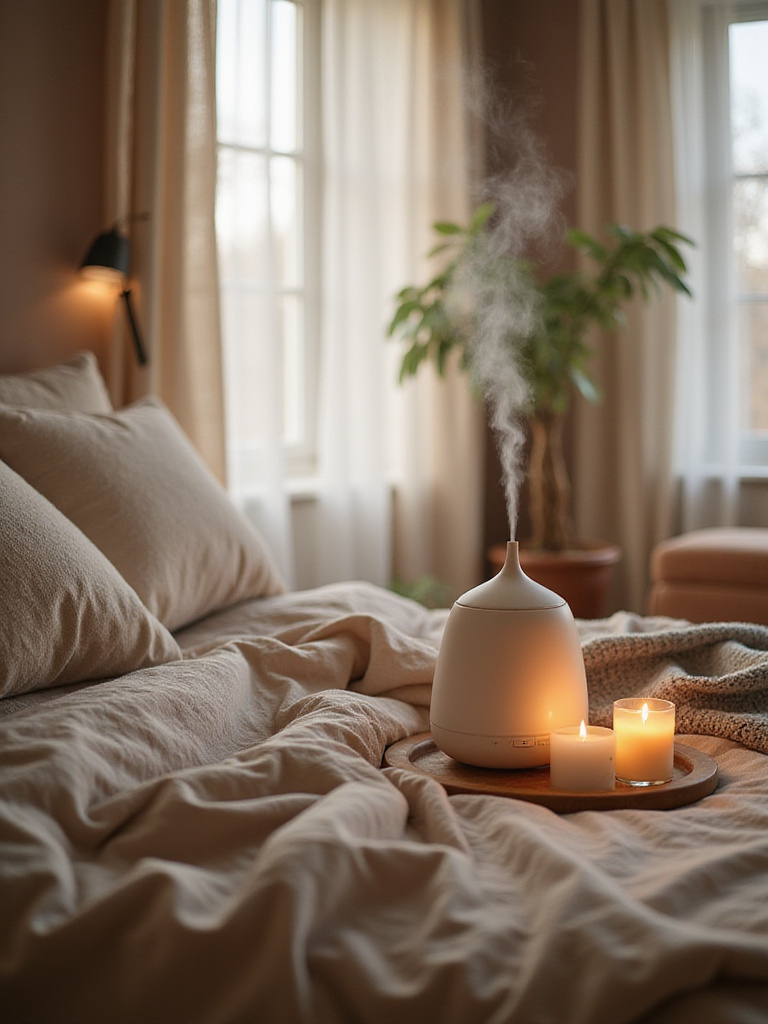
The beauty of reclaimed wood lies in its imperfections – nail holes, weathering, and color variations create visual interest that perfectly complements the relaxed, organic aesthetic of a cozy bedroom. Use reclaimed wood for floating shelves, picture frames, or even a accent wall behind your bed. The natural variations in color and texture add warmth without overwhelming the space, especially when paired with the earth-toned walls and natural fiber textiles we’ve already established.
Working with reclaimed wood often means embracing its existing character rather than trying to make it look new. Sand lightly to remove splinters while preserving the patina, and finish with natural oils or low-VOC sealers that enhance the wood’s natural beauty. The slightly rough texture and authentic aging create a tactile experience that invites touch and adds to the sensory richness of your retreat.
These natural wood elements provide the perfect foundation for incorporating energy-efficient lighting that supports both ambiance and environmental responsibility.
10. Install Energy-Efficient LED Lighting
Thoughtful lighting design transforms your bedroom’s atmosphere while dramatically reducing energy consumption and environmental impact. LED bulbs use 75% less energy than incandescent bulbs and last 25 times longer, making them both eco-friendly and economical. The key lies in choosing LEDs with warm color temperatures (2700K-3000K) that mimic the cozy glow of traditional bulbs without the heat and energy waste.
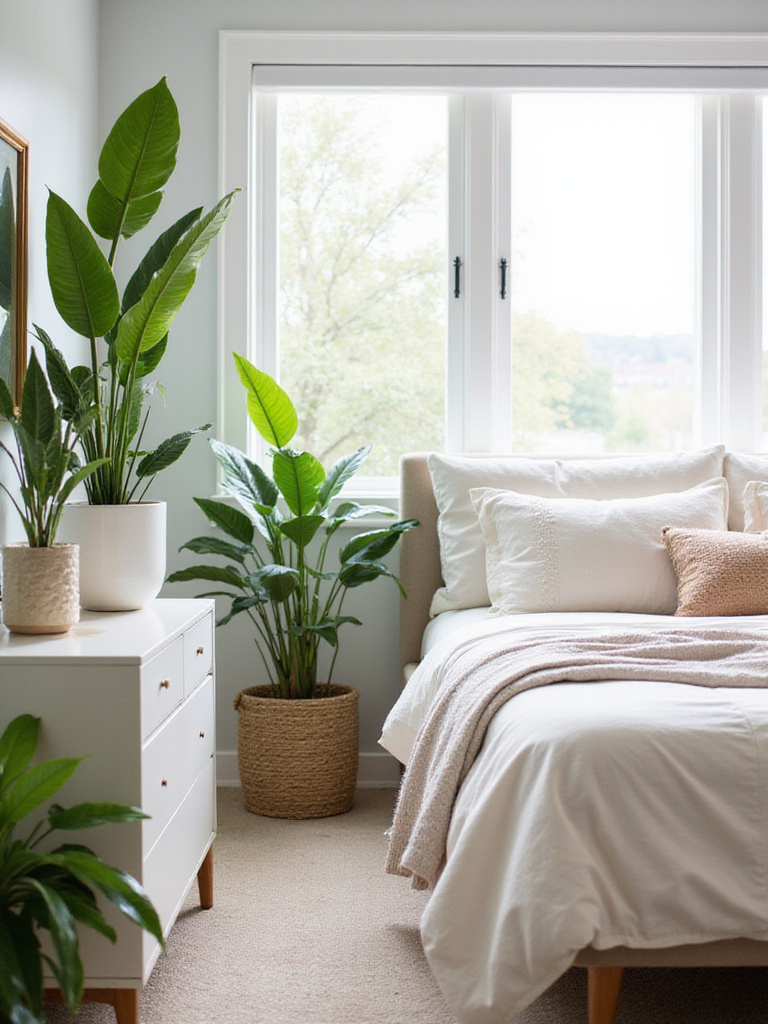
Layer your LED lighting for maximum flexibility and ambiance. Install dimmable LED bulbs in bedside lamps for reading, add LED strip lights behind your reclaimed wood headboard for soft ambient glow, and use LED candles for the flickering effect without the fire risk. Smart LED bulbs can be programmed to gradually dim as bedtime approaches, supporting your natural circadian rhythm while reducing energy consumption.
The longevity of LED bulbs means less frequent replacements and reduced packaging waste. Many LED bulbs now come in recyclable packaging or minimal packaging, further reducing their environmental impact. Choose bulbs from companies committed to sustainable manufacturing practices, and properly recycle old bulbs at electronics recycling centers.
- Warm white LEDs (2700K): Perfect for general bedroom lighting
- Soft white LEDs (3000K): Ideal for task lighting like reading
- Amber LEDs (2200K): Best for evening wind-down routines
This efficient lighting beautifully illuminates the natural storage solutions that keep your retreat organized and serene.
11. Organize with Natural Storage Solutions
Clutter disrupts the peaceful energy essential for a cozy bedroom retreat, making thoughtful storage solutions crucial for maintaining serenity. Natural storage options like woven baskets, wooden boxes, and linen bins provide organization while adding texture and warmth to your space. Seagrass baskets tucked under a vintage bench store extra blankets while contributing to the organic aesthetic, and wooden crates can be stacked to create a unique nightstand with built-in storage.

The beauty of natural storage lies in its dual function – these pieces organize your belongings while enhancing your decor. A large woven basket becomes a stylish hamper, small jute bins corral jewelry and accessories on your dresser, and a vintage wooden trunk at the foot of your bed stores seasonal clothing while providing extra seating. These materials age beautifully, developing patina and character that synthetic storage containers never achieve.
Choose storage solutions that complement your existing natural elements. Bamboo drawer organizers keep small items tidy while being completely biodegradable at the end of their life. Hemp rope baskets add texture while being incredibly durable and naturally antimicrobial. The key is selecting pieces that feel intentional rather than purely functional, ensuring they contribute to your bedroom’s overall aesthetic.
These organized foundations create space for incorporating natural scents that engage your senses and promote relaxation.
12. Incorporate Natural Aromatherapy
Essential oils derived from plants offer powerful aromatherapy benefits without the synthetic fragrances and chemicals found in conventional air fresheners and plug-ins. Lavender essential oil has been scientifically proven to reduce anxiety and improve sleep quality, while eucalyptus can help clear breathing passages and cedarwood promotes grounding and calm. Using a cold-water diffuser made from natural materials like bamboo or ceramic disperses these beneficial compounds without heat that can alter their therapeutic properties.
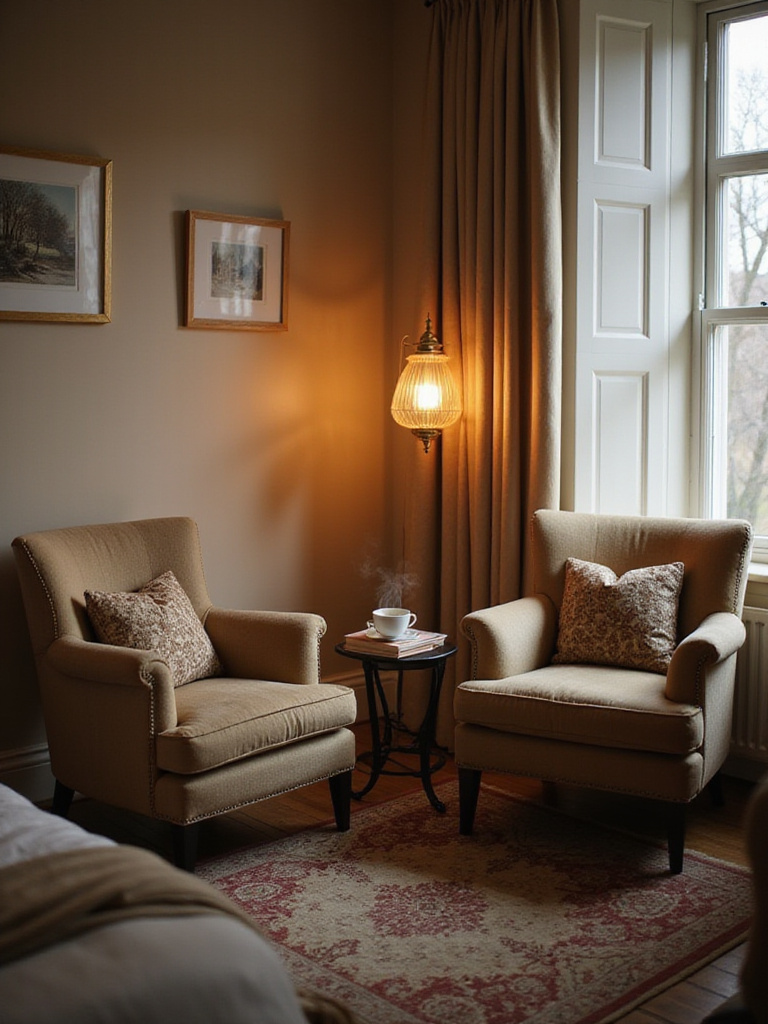
Creating scent layers throughout your bedroom enhances the sensory experience of your retreat. Place dried lavender sachets made from organic cotton in dresser drawers, hang eucalyptus bundles in your closet for natural moth deterrence, or simmer cinnamon sticks and orange peels on a small warmer for cozy autumn evenings. These natural approaches avoid the hormone-disrupting phthalates found in synthetic fragrances while connecting you to the plants and seasons that inspire them.
The ritual of choosing and applying natural scents becomes part of your evening routine. A few drops of chamomile oil on your pillow, a spritz of rose water on your sheets, or lighting a beeswax candle infused with bergamot signals to your brain that it’s time to transition from day to night. Keep a small collection of essential oils in a vintage wooden box, allowing you to customize your aromatherapy based on your mood and needs.
These natural scents complement the sustainable comfort of organic textiles that envelope you in softness.
13. Choose Sustainable Throw Pillows and Blankets
Sustainable throw pillows and blankets add layers of comfort while supporting ethical manufacturing and environmental responsibility. Organic cotton, hemp, and linen throws develop beautiful texture over time while being completely biodegradable at the end of their life cycle. Vintage wool blankets from thrift stores often feature superior quality and unique patterns that modern manufacturing rarely achieves, while supporting circular economy principles.
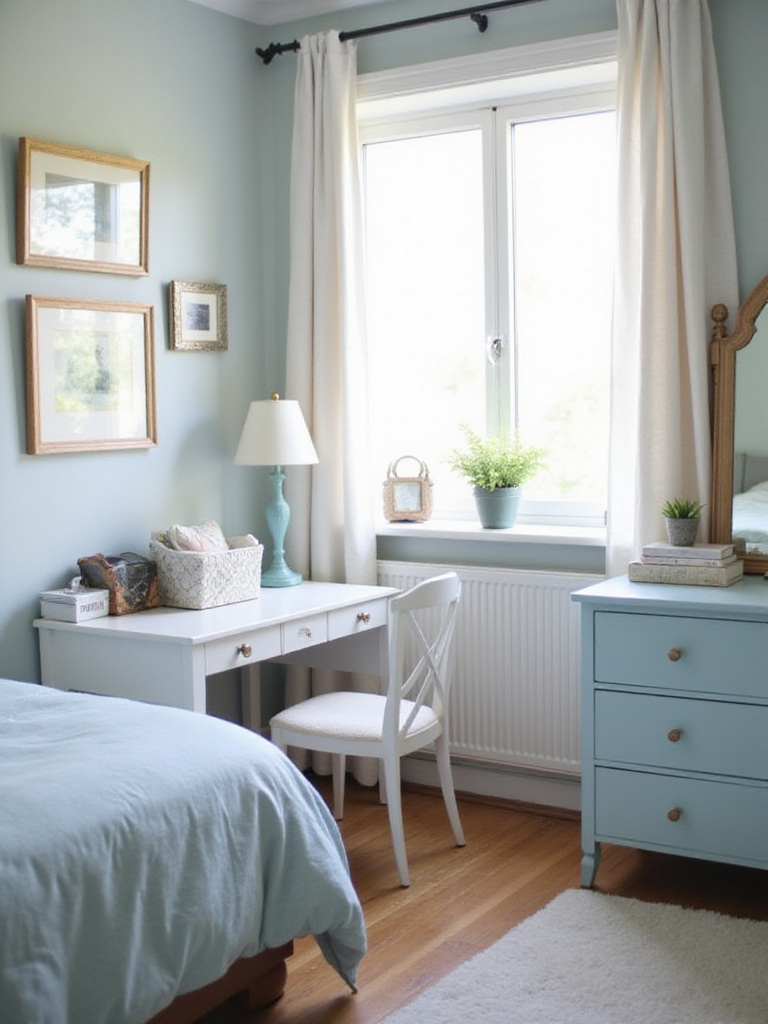
The key to creating cozy layers lies in mixing textures and weights rather than matching everything perfectly. A chunky knit organic cotton throw draped over a vintage linen armchair, hemp pillows in various sizes clustered on your bed, and a lightweight bamboo blanket folded at the foot of your bed create visual interest while providing options for different comfort needs. Natural fibers regulate temperature better than synthetics, keeping you comfortable throughout the night.
Look for pillows filled with organic materials like buckwheat hulls, organic cotton, or kapok fiber rather than synthetic foam that can off-gas chemicals. Buckwheat hull pillows provide excellent support while being completely natural and breathable. Kapok, harvested from seed pods, offers down-like softness without animal products or synthetic fill.
- Organic cotton: Soft, breathable, and gets better with each wash
- Hemp fabric: Naturally antimicrobial and incredibly durable
- Vintage wool: Superior quality and unique patterns from past decades
These sustainable textiles create the perfect foundation for incorporating mindful technology choices that support rather than disrupt your retreat.
14. Create a Tech-Free Charging Station
Establishing boundaries with technology is essential for creating a truly restful bedroom environment, but completely banishing devices isn’t always practical. A designated charging station outside your bedroom – perhaps in a hallway or adjacent room – keeps devices accessible while preventing the blue light and electromagnetic fields that can disrupt sleep. If space constraints require charging in your bedroom, create a contained station using natural materials that minimize visual and energetic disruption.
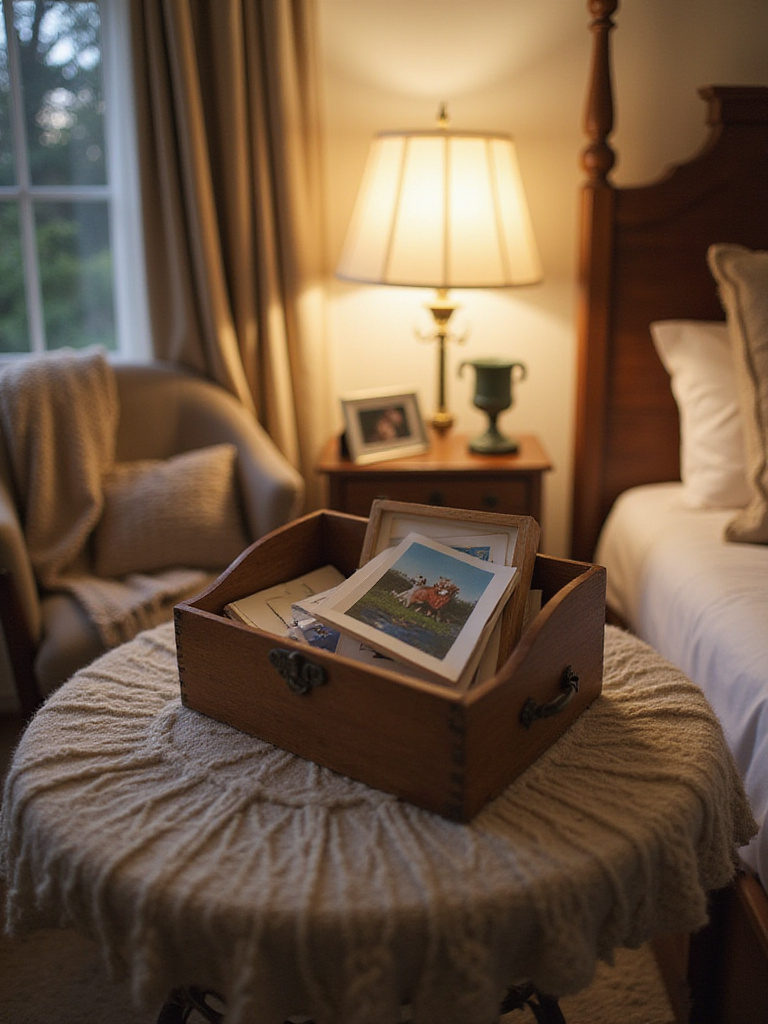
A small wooden box with a lid can house charging cables and devices while they power up overnight, keeping them out of sight and reducing the temptation to check them. Drill a small hole in the back for cable management, and line the interior with organic cotton fabric to prevent scratching. Position this station as far from your bed as possible, ideally behind a piece of furniture or in a corner where the LED lights won’t be visible.
The practice of “putting technology to bed” becomes a powerful evening ritual that signals the transition from day to night. Plug in your devices, close the charging station lid, and focus on analog activities like reading, journaling, or gentle stretching. This boundary creates mental space for reflection and relaxation while ensuring your devices are ready for the next day.
This mindful approach to technology perfectly complements the creation of a dedicated space for evening reflection and reading.
15. Design a Reading Nook with Natural Materials
A reading nook carved from a corner of your bedroom creates a dedicated space for quiet reflection and literary escape, essential elements of a restorative retreat. Position a comfortable chair near a window where natural light streams in during the day, and add a small side table made from reclaimed wood to hold your current book, a cup of herbal tea, and a small plant. The key is creating a space that feels separate from the sleeping area while remaining integrated with your bedroom’s overall aesthetic.
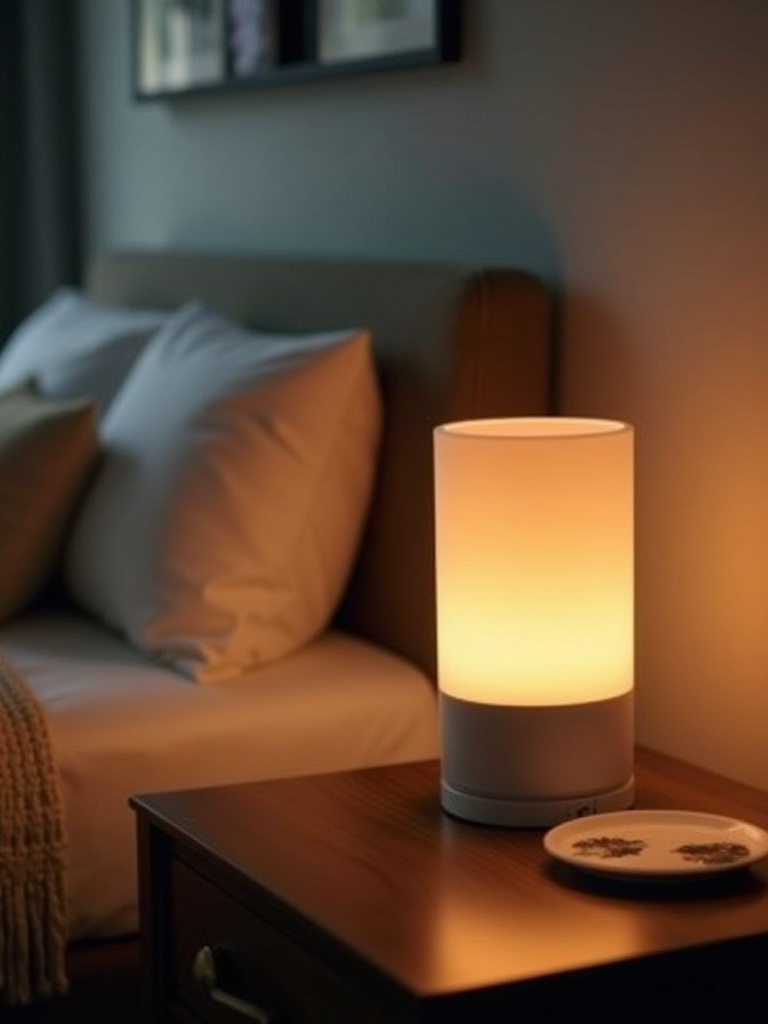
Choose seating that invites lingering – a vintage armchair reupholstered in organic linen, a floor cushion made from hemp fabric, or even a small bench with organic cotton cushions can work depending on your space and comfort preferences. Add a soft throw blanket and a small pillow for lumbar support, ensuring the space feels nurturing rather than merely functional. A small basket nearby can hold your current reading collection, keeping books organized while adding natural texture.
The lighting in your reading nook should be carefully considered for both day and evening use. A vintage brass floor lamp with an LED bulb provides focused task lighting, while a small table lamp creates ambient glow for evening reading. Position the seating to take advantage of natural light during the day while ensuring artificial lighting doesn’t create glare or eye strain during evening hours.
This dedicated space for quiet activities naturally leads to the importance of incorporating elements that connect you to the changing seasons.
16. Rotate Seasonal Natural Elements
Connecting your bedroom to the natural world’s rhythms prevents decor stagnation while celebrating the beauty of each season through sustainable, locally-sourced elements. Spring might bring branches of flowering trees in a vintage ceramic vase, while autumn could feature collected leaves pressed between glass in thrifted frames. Winter calls for evergreen boughs and pinecones gathered from local parks, and summer invites in wildflowers and herbs from your garden or farmers market.
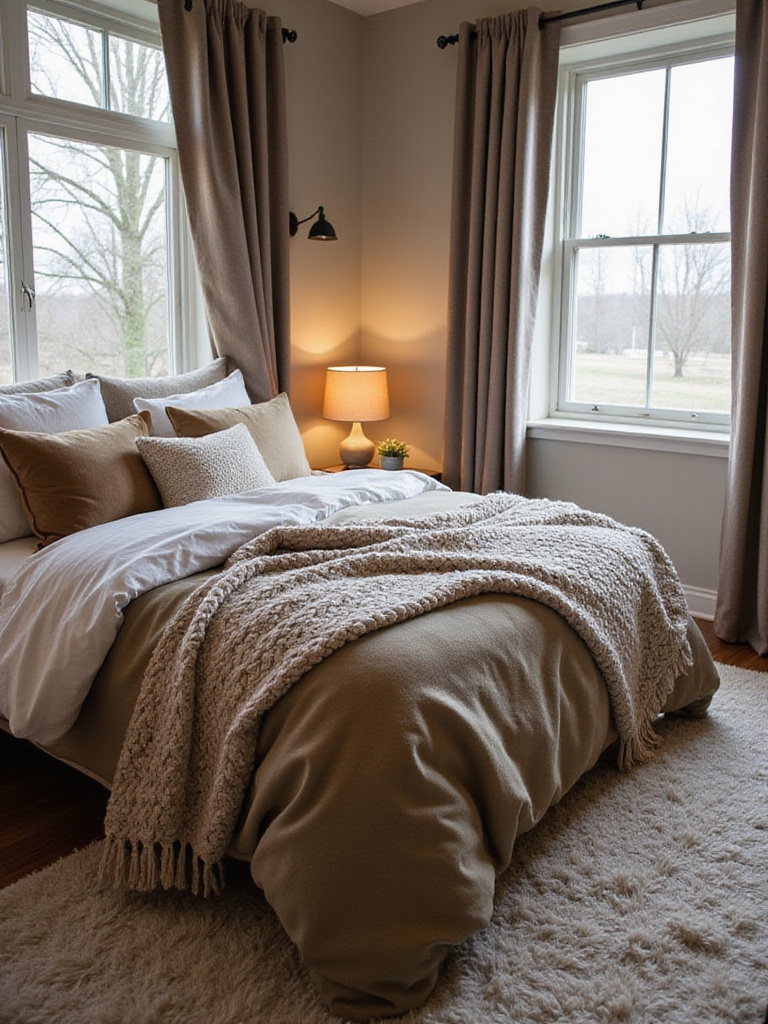
The practice of seasonal rotation becomes a mindful ritual that marks the passage of time and keeps your space feeling fresh without purchasing new items. Dried flowers and grasses can be composted when their season ends, branches can be added to outdoor compost piles, and natural elements return to the earth rather than filling landfills. This approach costs virtually nothing while providing constantly changing natural beauty.
Create a designated space for seasonal displays – perhaps a small shelf, the top of a vintage dresser, or a windowsill where natural light can highlight your collected treasures. A simple wooden tray or vintage silver platter can unify different elements while making it easy to refresh the display. Document your seasonal arrangements with photography to remember particularly beautiful combinations for future years.
- Spring: Flowering branches, bird nests, fresh green shoots
- Summer: Wildflowers, herbs, colorful stones from nature walks
- Autumn: Colorful leaves, acorns, small gourds from local farms
- Winter: Evergreen branches, pinecones, interesting bare branches
These seasonal connections deepen your relationship with the natural world while maintaining visual interest in your retreat.
17. Install Bamboo or Cork Flooring
Sustainable flooring choices transform your bedroom from the ground up, providing warmth, comfort, and environmental responsibility beneath your feet. Bamboo flooring offers the beauty of hardwood while being a rapidly renewable resource – bamboo reaches maturity in just 3-5 years compared to hardwood trees that take decades to grow. Cork flooring provides natural antimicrobial properties and incredible comfort underfoot while being harvested from the bark of cork oak trees without harming the tree itself.
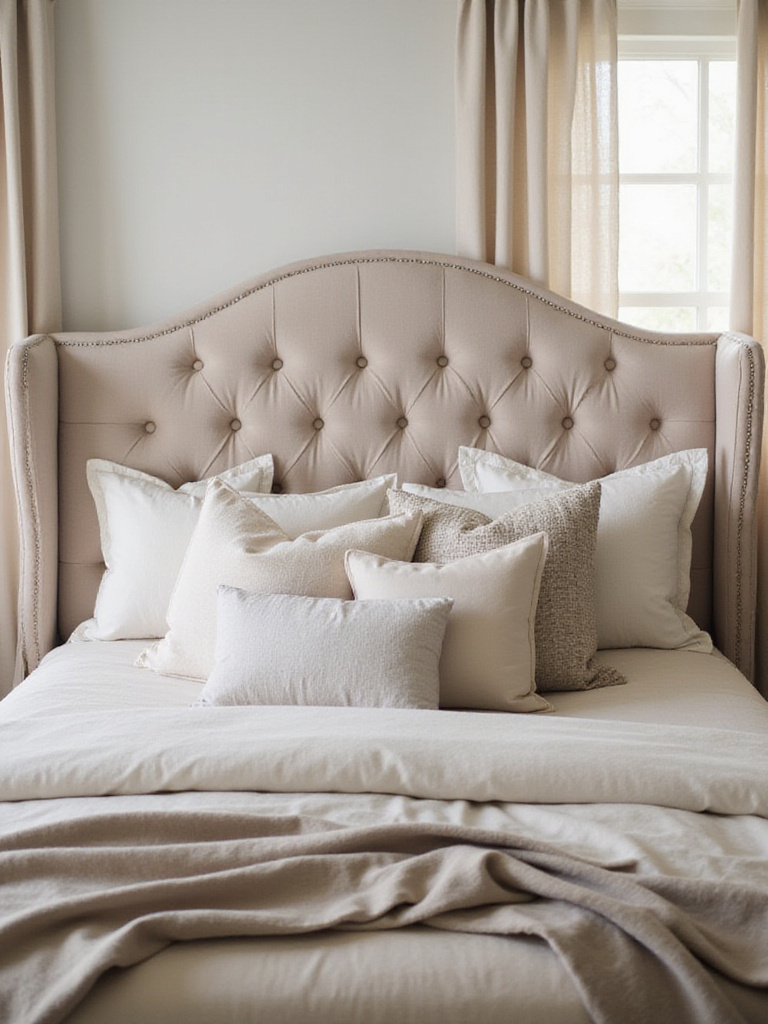
Both bamboo and cork offer superior comfort compared to traditional hardwood, with natural cushioning that reduces fatigue when standing and walking. Cork particularly excels at temperature regulation, staying warm in winter and cool in summer while providing natural sound absorption that creates a quieter, more peaceful bedroom environment. These materials also resist moisture and allergens better than carpet while being completely biodegradable at the end of their lifecycle.
The installation of sustainable flooring often improves indoor air quality by eliminating the off-gassing associated with synthetic carpets and their adhesives. Choose formaldehyde-free finishes and low-VOC installation materials to maximize health benefits. The natural grain patterns in bamboo and the unique cellular structure of cork add visual interest while providing neutral foundations that complement earth-toned walls and natural textiles.
This sustainable foundation supports the final element of creating your retreat: establishing boundaries that protect your sanctuary’s peaceful energy.
18. Create Natural Sound Barriers
Sound pollution significantly impacts sleep quality and overall well-being, making natural sound management crucial for your bedroom retreat. Heavy organic cotton curtains, wool area rugs, and upholstered furniture naturally absorb sound waves while adding to your room’s cozy aesthetic. A large tapestry made from natural fibers can cover a shared wall, reducing noise transmission while adding artistic interest and texture.
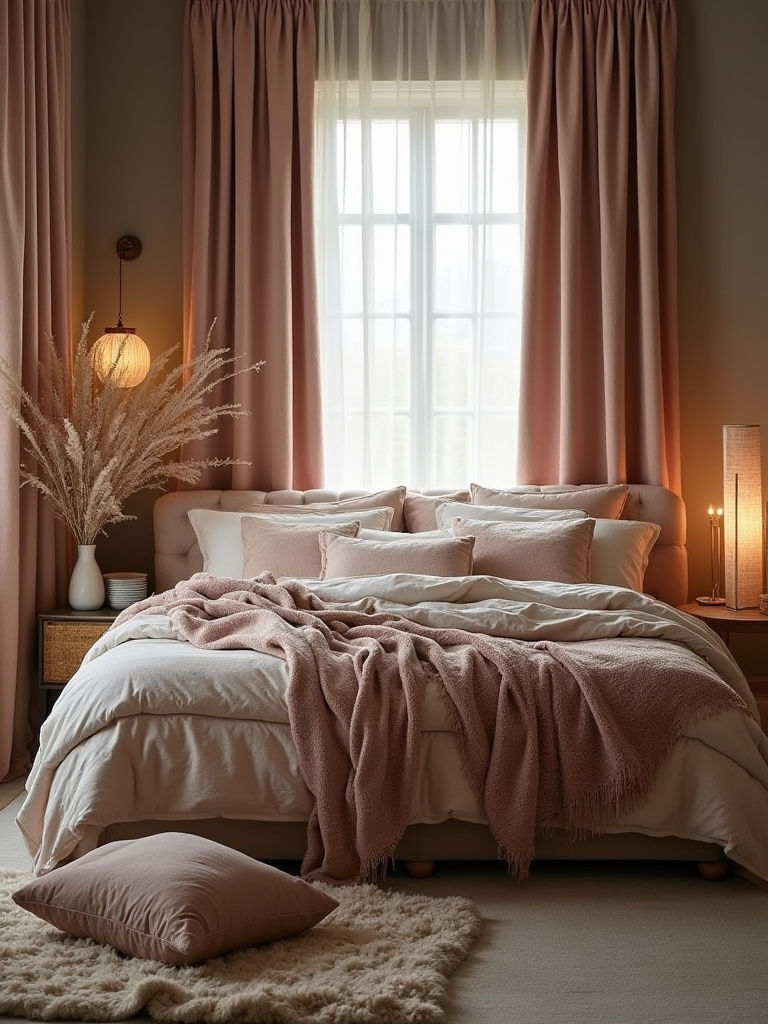
Natural materials excel at sound absorption because of their fibrous structure and density. Wool particularly effective at dampening both airborne sounds and impact noise, while organic cotton and linen provide softer absorption that reduces echo and reverberation. Layering these materials – a wool rug over cork flooring, hemp curtains paired with bamboo blinds, and organic cotton upholstery on vintage furniture – creates comprehensive sound management without synthetic acoustic panels.
Consider the strategic placement of natural sound barriers for maximum effectiveness. A bookshelf filled with books creates an effective sound barrier while adding intellectual charm to your space. Large plants in natural fiber baskets absorb sound while purifying air. Even the soft furnishings we’ve already discussed – organic cotton bedding, natural fiber throws, and sustainable pillows – contribute to the overall acoustic comfort of your retreat.
The goal is creating a cocoon of natural quiet that allows your nervous system to fully relax and restore.
Building on these natural sound barriers, let’s explore how proper air circulation enhances your retreat’s environmental quality.
19. Improve Air Circulation with Natural Methods
Fresh air circulation is fundamental to creating a healthy bedroom environment, and natural methods often prove more effective and sustainable than mechanical systems. Cross-ventilation achieved by opening windows on opposite sides of your room creates gentle air movement that naturally regulates temperature and humidity while bringing in fresh oxygen. Even in urban environments, early morning and late evening air is typically cleaner and more pleasant than midday air.
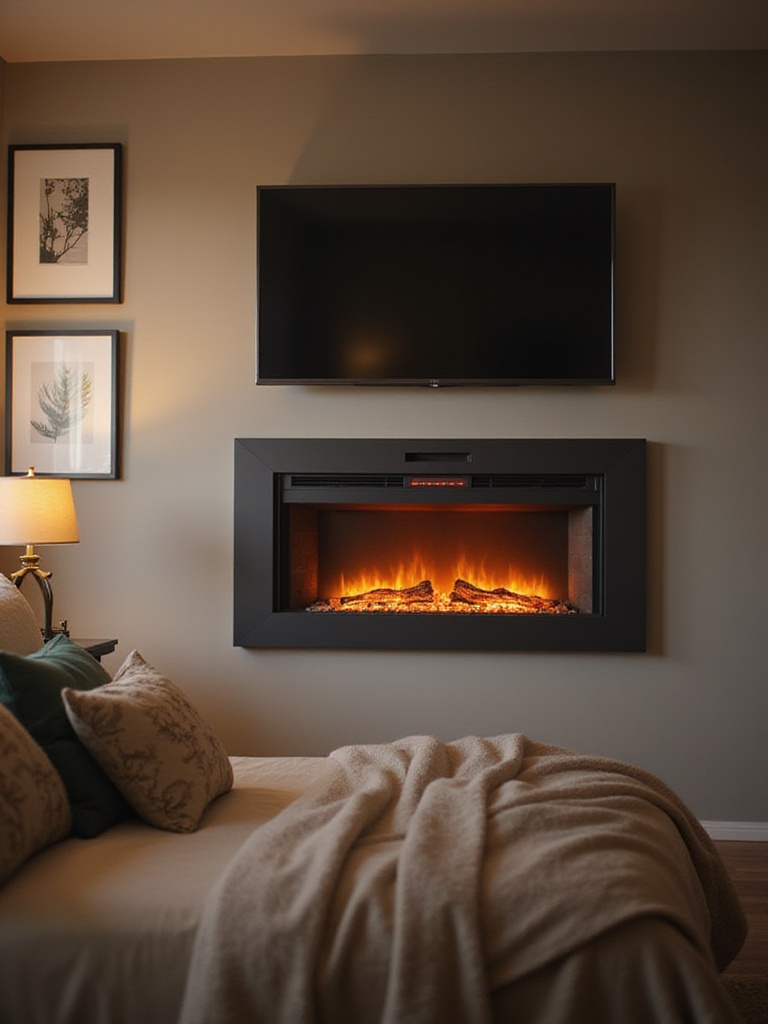
Ceiling fans made from sustainable materials like bamboo or reclaimed wood provide energy-efficient air movement while adding to your room’s natural aesthetic. The gentle breeze from a well-positioned fan can make a room feel 3-4 degrees cooler, reducing the need for air conditioning and its associated energy consumption. Choose fans with reversible motors – counterclockwise in summer for cooling breeze, clockwise in winter to circulate warm air downward.
Natural air purification through plants works continuously to improve your bedroom’s air quality. Snake plants, spider plants, and peace lilies actively filter toxins while releasing oxygen, creating cleaner air for sleeping. Position plants strategically near windows where they receive adequate light while contributing to air circulation patterns. The transpiration process from plants also adds beneficial humidity to dry indoor air.
- Morning ventilation: Open windows for 10-15 minutes upon waking
- Evening cooling: Create cross-breezes 30 minutes before bedtime
- Plant placement: Position air-purifying plants near natural air flow patterns
This natural approach to air quality sets the stage for incorporating water elements that add tranquility and humidity.
20. Add Natural Water Elements
The sound of gently moving water creates immediate calm while adding beneficial humidity to your bedroom environment. A small tabletop fountain made from natural stone or ceramic provides the soothing sound of trickling water while requiring minimal energy to operate. The negative ions generated by moving water can improve air quality and mood, similar to the feeling of being near a waterfall or ocean.
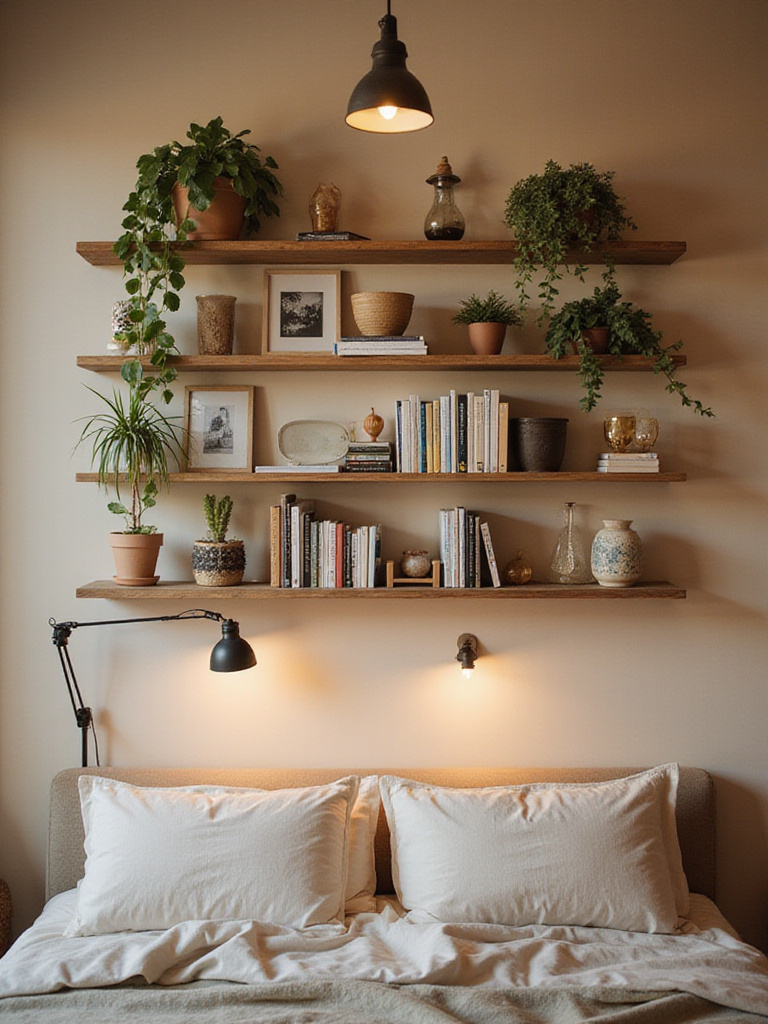
Choose water features made from natural materials that complement your sustainable aesthetic. A simple ceramic bowl with a small solar-powered fountain insert can sit on a vintage wooden table, creating gentle water sounds powered entirely by sunlight collected during the day. Alternatively, a small collection of plants in water-filled glass vessels creates humidity while adding living beauty – pothos, bamboo, and philodendrons thrive in water alone.
The maintenance of natural water elements becomes part of your mindful routine. Daily attention to water levels, weekly cleaning to prevent algae growth, and occasional replacement of water keeps these features healthy while providing moments of peaceful focus. Use distilled or filtered water to prevent mineral buildup, and add a few drops of essential oil occasionally for subtle aromatherapy benefits.
These water elements work synergistically with the plants and natural materials throughout your retreat to create a complete ecosystem.
As we’ve created this comprehensive natural environment, our final element focuses on establishing the daily practices that maintain your retreat’s peaceful energy.
21. Establish Evening Rituals with Natural Elements
Evening rituals using natural elements signal to your body and mind that the day is ending and rest is approaching. Light your beeswax candles, mist your organic cotton sheets with lavender water, and spend a few minutes tending to your plants while reflecting on the day. These simple practices create a transition from the busy energy of daytime to the restorative calm your bedroom retreat is designed to provide.
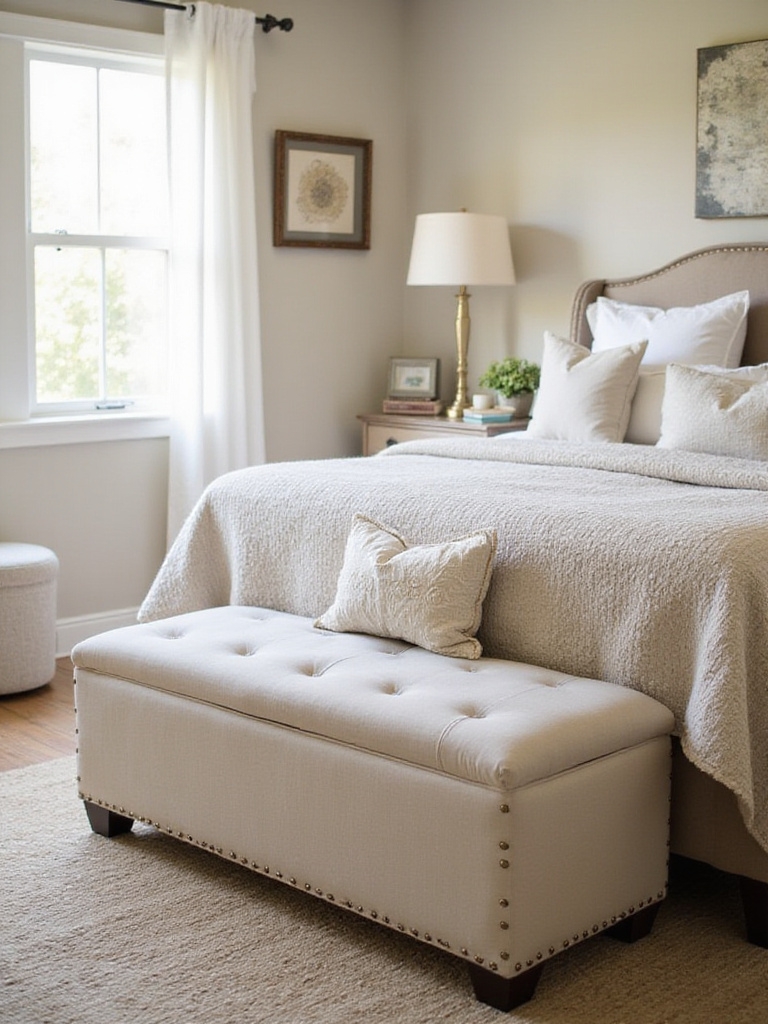
The power of ritual lies in its consistency and intentionality. Choose 3-4 simple practices that incorporate the natural elements throughout your bedroom – perhaps watering plants while practicing gratitude, applying a few drops of essential oil to your pulse points, and arranging tomorrow’s clothes on your vintage wooden chair. These actions become anchors that ground you in the present moment while preparing your space for rest.
Natural elements make these rituals more meaningful and effective. The scent of lavender signals relaxation to your nervous system, the act of caring for plants connects you to life cycles and growth, and the warm glow of natural candles triggers the production of sleep hormones. Unlike synthetic alternatives, these natural elements support your body’s innate wisdom rather than disrupting it.
- Plant care: Water and tend plants while practicing mindfulness
- Aromatherapy: Apply essential oils or light natural candles
- Preparation: Arrange clothes and prepare space for morning
This ritualistic approach to evening preparation maximizes the restorative potential of your carefully crafted retreat.
22. Practice Mindful Consumption for Future Updates
The most sustainable approach to maintaining your cozy bedroom retreat involves thoughtful consideration of future purchases and updates. Before adding any new element, pause to consider whether it serves a genuine need, complements your existing natural aesthetic, and aligns with your environmental values. This practice prevents impulse purchases while ensuring every addition enhances rather than clutters your peaceful sanctuary.
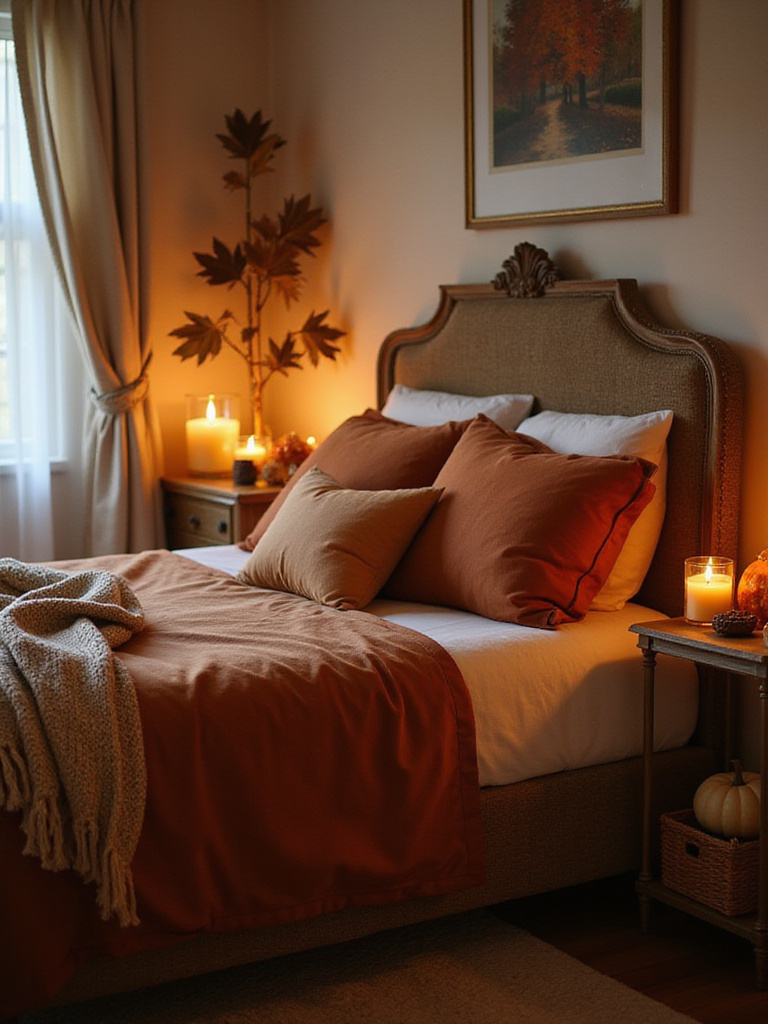
When updates are needed, prioritize secondhand, vintage, or artisan-made pieces that will age beautifully and last for decades. A single well-made organic cotton throw will provide more satisfaction and longevity than multiple synthetic alternatives. Consider the full lifecycle of potential purchases – how they’re made, how long they’ll last, and what happens when they’re no longer needed. This approach often leads to investing in fewer, higher-quality pieces that truly enhance your retreat.
The practice of mindful consumption extends to seasonal updates and refreshes. Instead of purchasing new decor items, rearrange existing pieces, rotate seasonal natural elements, or trade items with friends for fresh perspectives. This approach keeps your space dynamic while honoring the environmental principles that guide your sustainable retreat.
Your bedroom retreat becomes a reflection of conscious choices that support both personal well-being and planetary health, creating a sanctuary that nurtures both you and the world around you.
Conclusion
Creating a cozy bedroom retreat through sustainable choices proves that environmental responsibility and personal comfort are not just compatible – they’re synergistic. Each natural material, vintage find, and mindful practice we’ve explored works together to create a space that nurtures both your well-being and the planet’s health. From the grounding warmth of earth-toned walls to the gentle sound of natural water features, these cozy bedroom decorating ideas demonstrate that the most beautiful retreats often emerge from the simplest, most authentic choices.
The transformation of your bedroom into an ultimate retreat isn’t about perfection or completion – it’s about creating an evolving sanctuary that grows more beautiful and meaningful over time. Vintage furniture develops patina, organic textiles soften with use, and plants mature into living sculptures. This natural aging process creates depth and character that new, synthetic materials simply cannot replicate, while your daily rituals deepen your connection to the space and its natural elements.
Start with one or two elements that resonate most strongly with you – perhaps sourcing vintage furniture or switching to organic bedding – and allow your retreat to develop organically. Trust that each sustainable choice builds upon the last, creating a bedroom that not only looks beautiful but feels authentically yours. Your cozy bedroom decorating ideas should reflect your values while supporting the restorative sleep and peaceful moments that make life more meaningful.
